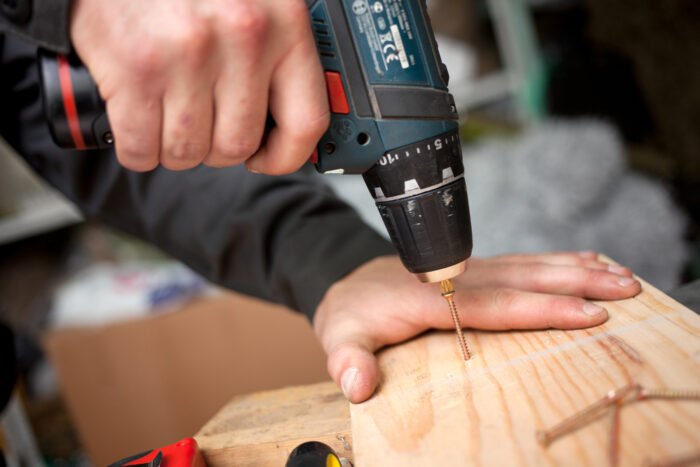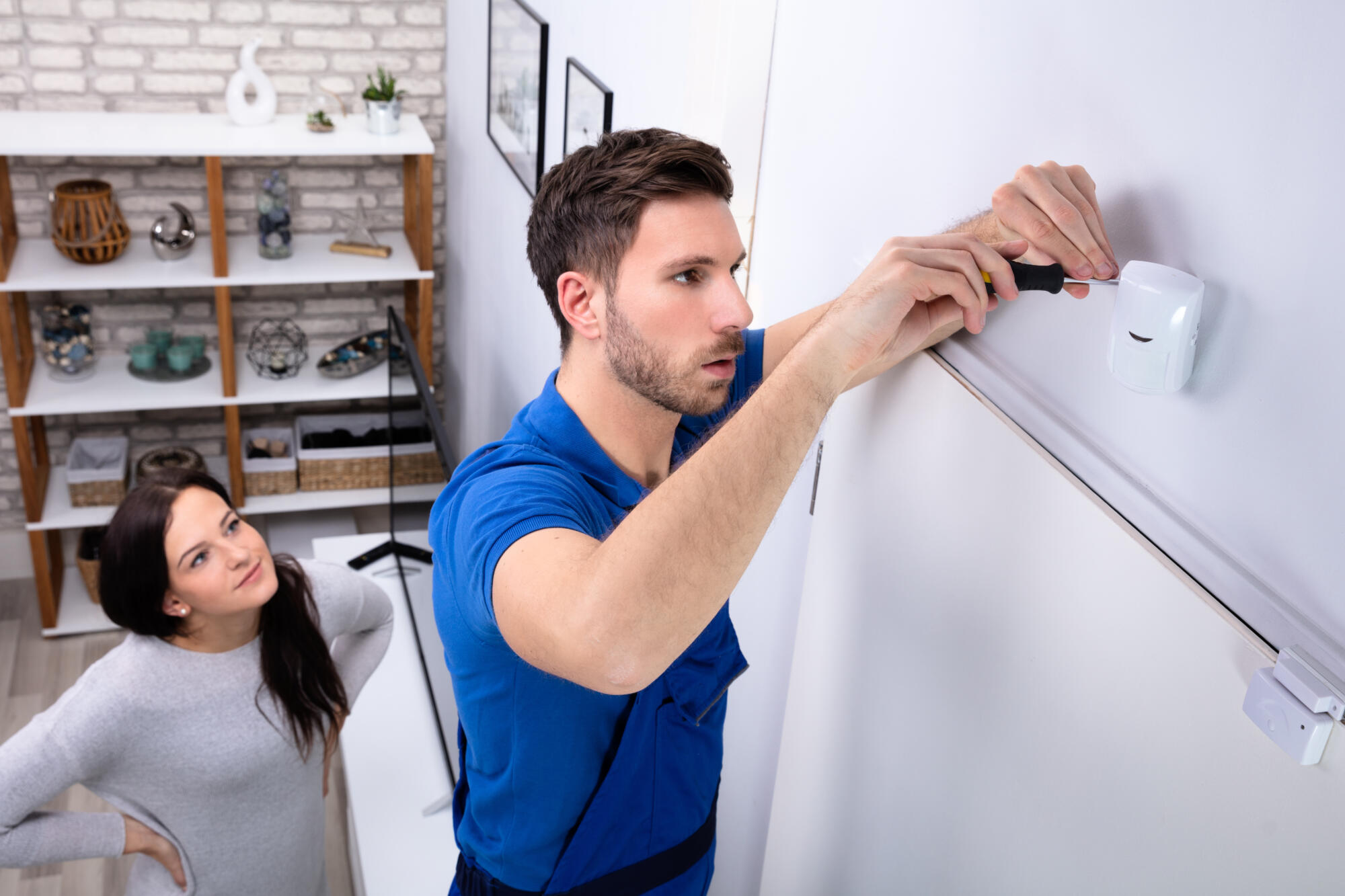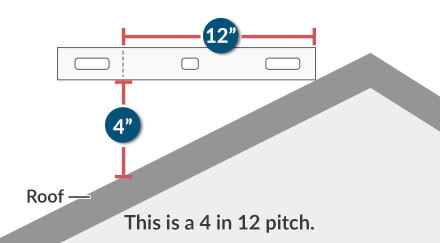Cordless drills are generally safer than corded drills because they are coiled and have frayed wires in which you can easily trip over. So choosing and owning a cordless drill is better than a corded drill. Whatever type of drill comes with safety risks. But how do you ensure safety when using a cordless drill?
In this post, you’ll learn some helpful tips when using a cordless drill.
Protect Your Eyes
One of the best drilling safety tips is wearing eye protection. While this step is simple to do, it’s usually overlooked and forgotten. Make sure to prioritize this step because metal shrapnel or wood sharp tiny pieces from the workpiece could easily swing during the drilling operation and harm your eyes.
Here are some tips to protect your eyes when using a cordless drill:
- Wear an eye-protective gear such as goggles or eyeglasses. A helmet can also be used with a clear window so you can easily view what you’re drilling.
- Don’t lean over or come too close to the workpiece. Set an appropriate distance between the workpiece and your eyes (not less than one and a half feet).
- Create pilot holes in wood, metal or steel, or any type of material you will use before drilling to avoid applying to much pressure when drilling that could possibly cause material pieces, such as metal shrapnel or sharp wood pieces, to swing from the workpiece.
Avoid Loose Fitting Clothes
While baggy clothes are comfortable to wear when renovating or doing carpentry work, most especially when you’re doing construction work, it’s not advisable to wear such type of clothes. Loose strands might get caught during drilling and cause accidents. Also, don’t wear hanging jewelry pieces such as bracelets and necklaces to avoid a potential trip to the emergency room.
Protect Your Lungs
There are drilling jobs that would require you to wear breathing protection. While you can use a dust mask, it is only used for the short-term, and you’ll eventually feel discomfort during a prolonged drilling operation. That’s why the best lung protection is wearing a respirator.
While a dust mask can help, it’s only a temporary solution and may cause discomfort when you’re drilling for a long time. If you’re drilling regularly, wearing a respirator will keep you comfortable for prolonged periods. Also, it will help reduce the respiratory problems you might encounter with various materials that can be a respiratory hazard, such as wood dust particles.

Protect Your Hands
You use your hands for working, so it’s a must to protect them when using a cordless drill. Make sure always to have a pair of mechanics gloves ready. It should be tight-fitting, not loose, for a smoother and safer drilling job.
Wearing a mechanics glove is a great option if you work with materials producing heat. It also holds the same is true with drill bits. Drilling through steel could result in blistered fingers, ruining your day. So it’s always best to wear gloves at all times when drilling.
Protect Your Ears
If you’ll be drilling for a longer period than expected, wearing an ear protector is essential. While drilling sound is tolerable, working for prolonged periods may stress your eardrum.
Set the Bits Properly
Avoid using a loose bit. Otherwise, it will slip, or you won’t be able to create straight holes. Setting the drill bit properly is important for a smoother drilling job. Insert the bit into the chuck and tighten the bit with the chuck key. Also, replace a bit if you notice wear and tear before using the cordless drill. So you’ll come up with the best drilling results.
Treat Battery Properly
Cordless drills require batteries, specifically lithium-ion batteries, to work without a main source of power. Treating your Li-ion batteries is important for safety reasons. This type of battery is designed to fail on its own if something goes wrong, keeping something worse, like fire, from happening.
A fire could result in improperly handled batteries, which usually happen when they don’t fail intentionally when something goes wrong. Always buy a replacement battery that comes from the manufacturer or has the same brand of the original battery or one that came with the cordless drill when you bought it.
Here are some battery tips and tricks when using a cordless drill:
- If you feel that your cordless drill battery is too hot during operation, pull the drill out. Give it some time to rest.
- When you’re charging the battery, and it suddenly feels hot to touch, it could mean overheating. Pull out the battery and give it a break.
- Don’t use any other charger for the cordless drill battery because an untoward accident could result from an unstable power source.
- Always charge your cordless drill battery indoors, not outdoors, to avoid an extreme cold, which is tough for Li-ion batteries.
- Buy a replacement battery early even before the current one fails, so you don’t have to delay finishing a drilling job when you badly need it.
Bonus Drilling Safety Tips
- Always clamp small pieces together, most especially you’re drilling into a small, loose workpiece. It is safe to clamp it down before drilling. Never hold the workpiece down only using one hand when drilling because the drill could slip, causing injury.
- Avoid overheating your drill bit when you’re drilling at high speeds or through hard materials. The drill bit encounters an immense amount of heat caused by friction, rapidly overheating it. It is best to start drilling at low drill speeds. You can eventually increase the drill speed if it’s not moving smoothly.
- Stick to slow speeds if you’re drilling many holes or through hard materials. Make sure to pause occasionally so that the bit is given time to cool down.
- Drill using steady pressure by holding the drill steadily and pushing it into the material you are drilling. If it’s taking more pressure to drill a hole, then the bit you’re using must be incorrect.
Conclusion
Whether you’re a newbie or seasoned power tool user, using a cordless drill should always entail prioritizing your safety in mind. While cordless drills are generally safe to use, implementing precautionary features is crucial to your overall safety. Always remember these simple tips when using a cordless drill for the best possible outcome of your next project without compromising your health and safety.






